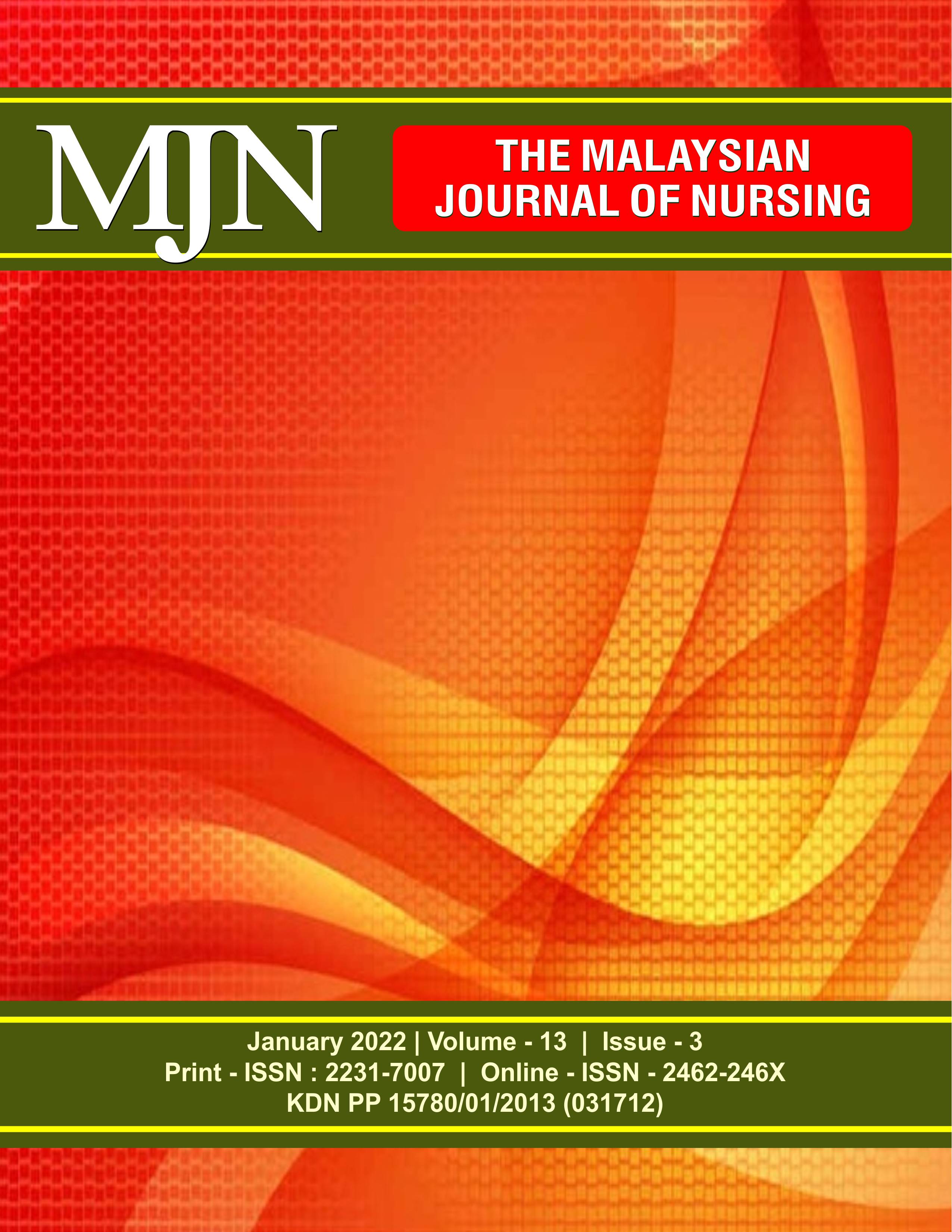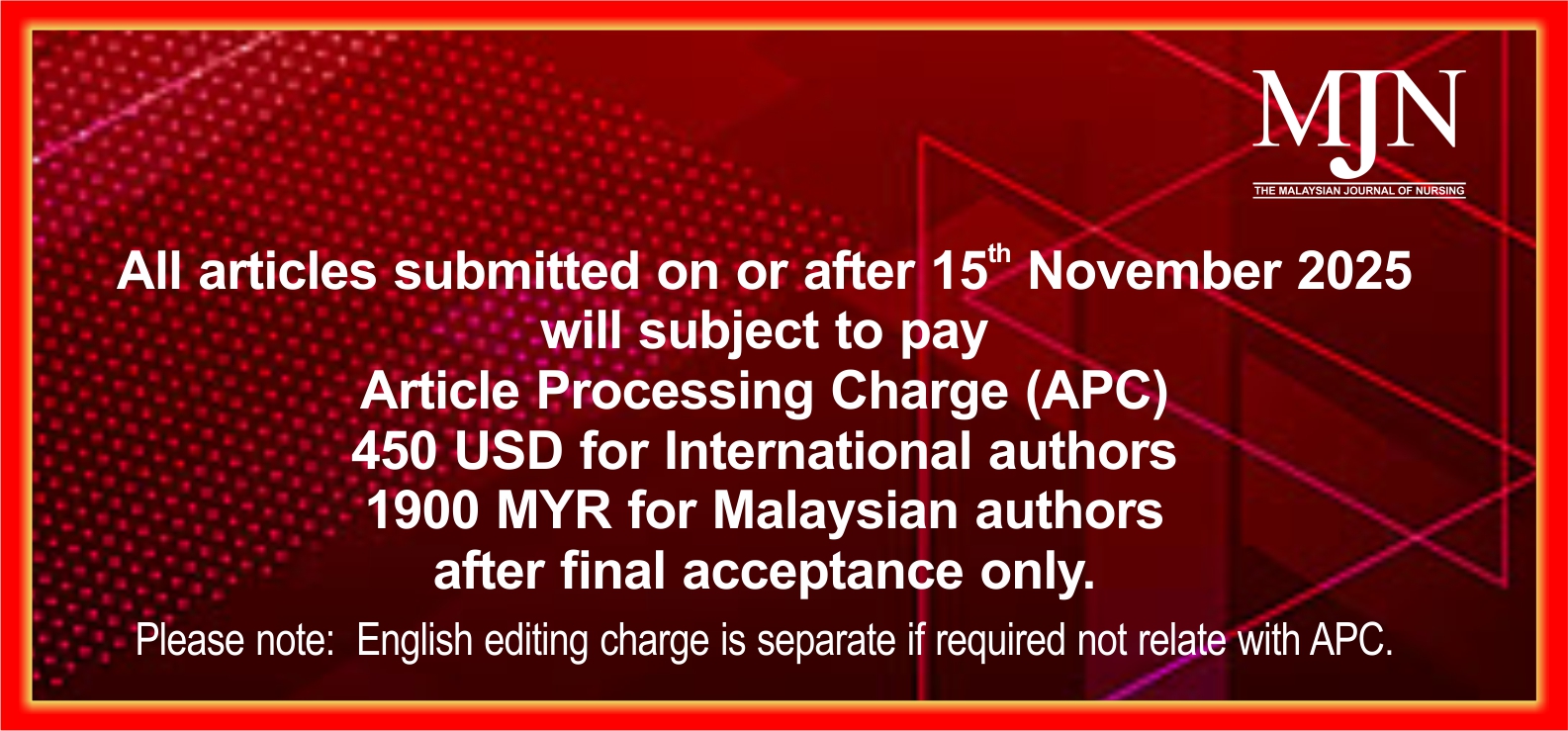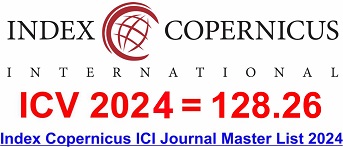THE VASCULAR COGNITIVE IMPAIRMENT AND FUNCTIONAL DEPENDENCE AMONG POST-STROKE PATIENTS AT HOSPITAL UNIVERSITI SAINS MALAYSIA
DOI:
https://doi.org/10.31674/mjn.2022.v13i03.005Abstract
Effectiveness of stroke care and treatment recently was associated with increase stroke survivors however, half of them are left with significant vascular cognitive impairment and functional dependent. The aims of this study is to determine the association between Vascular Cognitive Impairment (VCI) with clinical characteristics and functional dependence among 42 post-stroke patients admitted at Hospital Universiti Sains Malaysia (Hosp.USM), Kelantan, Malaysia. Personal information, level of cognitive impairment using Mini-Mental State Examination (MMSE) and functional dependence and independent level using a Barthel index data was collected. The result showed that 23.8% of stroke patients had severe vascular cognitive impairment, 40.5% had mild vascular cognitive impairment, while the other 35.7% had no vascular cognitive impairment. Besides, the functional level indicated that 19.0% of participants were dependent and 81.0% were independent. There was no statistically significant association between vascular cognitive impairment with gender, stroke location, and underlying medical disease. However, a significant and positive correlation was found between the level of vascular cognitive impairment and functional dependence level (r = 0.553, p < 0.001). An early assessment of the degree of cognitive impairment and functional independence will help enhance the treatment of stroke patients and reduce potential problems such as secondary strokes or other cardiovascular events.
Keywords:
Cognitive Impairment, Post-Stroke Patient, Dependence and IndependenceDownloads
References
Baker, C. M., Burks, J. D., Briggs, R. G., Stafford, J., Conner, A. K., Glenn, C. A., ... & Sughrue, M. E. (2018). A Connectomic Atlas of the Human Cerebrum - Chapter 4: The Medial Frontal Lobe, Anterior Cingulate Gyrus, and Orbitofrontal Cortex. Operative Neurosurgery, 15(suppl_1), S122-S174. https://doi.org/10.1093/ons/opy257
Benjamin, E. J., Virani, S. S., Callaway, C. W., Chamberlain, A. M., Chang, A. R., Cheng, S., ... & Muntner, P. (2018). Heart disease and stroke statistics - 2018 update: a report from the American Heart Association. Circulation, 137(12), e467-e492. https://doi.org/10.1161/CIR.0000000000000558
Berges, I. M., Kuo, Y. F., Ottenbacher, K. J., Seale, G. S., & Ostir, G. V. (2012). Recovery of functional status after stroke in a tri-ethnic population. Pm&r, 4(4), 290-295. https://doi.org/10.1016/j.pmrj.2012.01.010
Caro, C. C., Mendes, P. V. B., Costa, J. D., Nock, L. J., & Cruz, D. M. C. D. (2017). Independence and cognition post-stroke and its relationship to burden and quality of life of family caregivers. Topics in Stroke Rehabilitation, 24(3), 194-199. https://doi.org/10.1080/10749357.2016.1234224
Cech, D. J., & Martin, S. T. (2012). Tink. Motor Control and Motor Learning. In Functional Movement Development Across the Life Span, 68-87.
Dong, Y., Sharma, V. K., Chan, B. P. L., Venketasubramanian, N., Teoh, H. L., Seet, R. C. S., ... & Chen, C. (2010). The Montreal Cognitive Assessment (MoCA) is superior to the Mini-Mental State Examination (MMSE) for the detection of vascular cognitive impairment after acute stroke. Journal of the Neurological Sciences, 299(1-2), 15-18. https://doi.org/10.1016/j.jns.2010.08.051
Douiri, A., Rudd, A. G., & Wolfe, C. D. (2013). Prevalence of poststroke cognitive impairment: South London stroke register 1995–2010. Stroke, 44(1), 138-145. https://doi.org/10.1161/strokeaha.112.670844
Feroz Memon, T., Ali Lakhair, M., & Saleem Rind, M. (2016). Socio-demographic risk factors for hemorrhagic and ischemic stroke: a study in tertiary care hospital of Hyderabad. Pakistan Journal of Neurological Sciences, 11(1), 24-29.
Gibson, C. L., & Attwood, L. (2016). The impact of gender on stroke pathology and treatment. Neuroscience & Biobehavioral Reviews, 67, 119-124. https://doi.org/10.1016/j.neubiorev.2015.08.020
Iwamoto, Y., Imura, T., Tanaka, R., Imada, N., Inagawa, T., Araki, H., & Araki, O. (2020). Development and validation of machine learning-based prediction for dependence in the activities of daily living after stroke inpatient rehabilitation: a decision-tree analysis. Journal of Stroke and Cerebrovascular Diseases, 29(12), 105332. https://doi.org/10.1016/j.jstrokecerebrovasdis.2020.105332
Jones, B., McClean, S., & Stanford, D. (2019). Modelling mortality and discharge of hospitalized stroke patients using a phase-type recovery model. Health Care Management Science, 22(4), 570-588. https://doi.org/10.1007/s10729-018-9446-6
Mellon, L., Brewer, L., Hall, P., Horgan, F., Williams, D., & Hickey, A. (2015). Cognitive impairment six months after ischaemic stroke: A profile from the ASPIRE-S study. BMC Neurology, 15(1), 1-9. https://doi.org/10.1186/s12883-015-0288-2
National Institute of Neurological Disorders and Stroke (NINDS). (2011). Post-Stroke Rehabilitation Fact Sheet. NIH Publications. https://www.ninds.nih.gov/Disorders/Patient-Caregiver-Education/Fact-Sheets/Post-Stroke-Rehabilitation-Fact-Sheet
Paker, N., Buğdaycı, D., Tekdöş, D., Kaya, B., & Dere, Ç. (2010). Impact of cognitive impairment on functional outcome in stroke. Stroke Research and Treatment, 2010. https://doi.org/10.4061/2010/652612
Renjen, P. N., Chaudhari, D. M., & Meman, M. (2016). Hormone use and stroke. Apollo Medicine, 13(1), 2-5.
Stephens, S., Kenny, R. A., Rowan, E., Allan, L., Kalaria, R. N., Bradbury, M., & Ballard, C. G. (2004). Neuropsychological characteristics of mild vascular cognitive impairment and dementia after stroke. International Journal of Geriatric Psychiatry, 19(11), 1053-1057. https://doi.org/10.1002/gps.1209
World Health Organization (WHO). (2002). Towards a Common Language for Functioning, Disability and Health ICF. International Classification. https://doi.org/WHO/EIP/GPE/CAS/01.3
Yoshida, D., Ninomiya, T., Doi, Y., Hata, J., Fukuhara, M., Ikeda, F., ... & Kiyohara, Y. (2012). Prevalence and causes of functional disability in an elderly general population of Japanese: The Hisayama study. Journal of Epidemiology, 22(3), 222-229. https://dx.doi.org/10.2188%2Fjea.JE20110083
Zarina, Z. A., Zahiruddin, O., & AH, C. W. (2007). Validation of Malay mini mental state examination. Malaysian Journal of Psychiatry, 16(1).
Zulkifly, M. F. M., Ghazali, S. E., Din, N. C., & Subramaniam, P. (2016). The influence of demographic, clinical, psychological and functional determinants on post-stroke cognitive impairment at day care stroke center, Malaysia. The Malaysian Journal of Medical Sciences, 23(2), 53.
Published
How to Cite
Issue
Section
License
Copyright (c) 2021 The Malaysian Journal of Nursing (MJN)

This work is licensed under a Creative Commons Attribution-NonCommercial-NoDerivatives 4.0 International License.



































